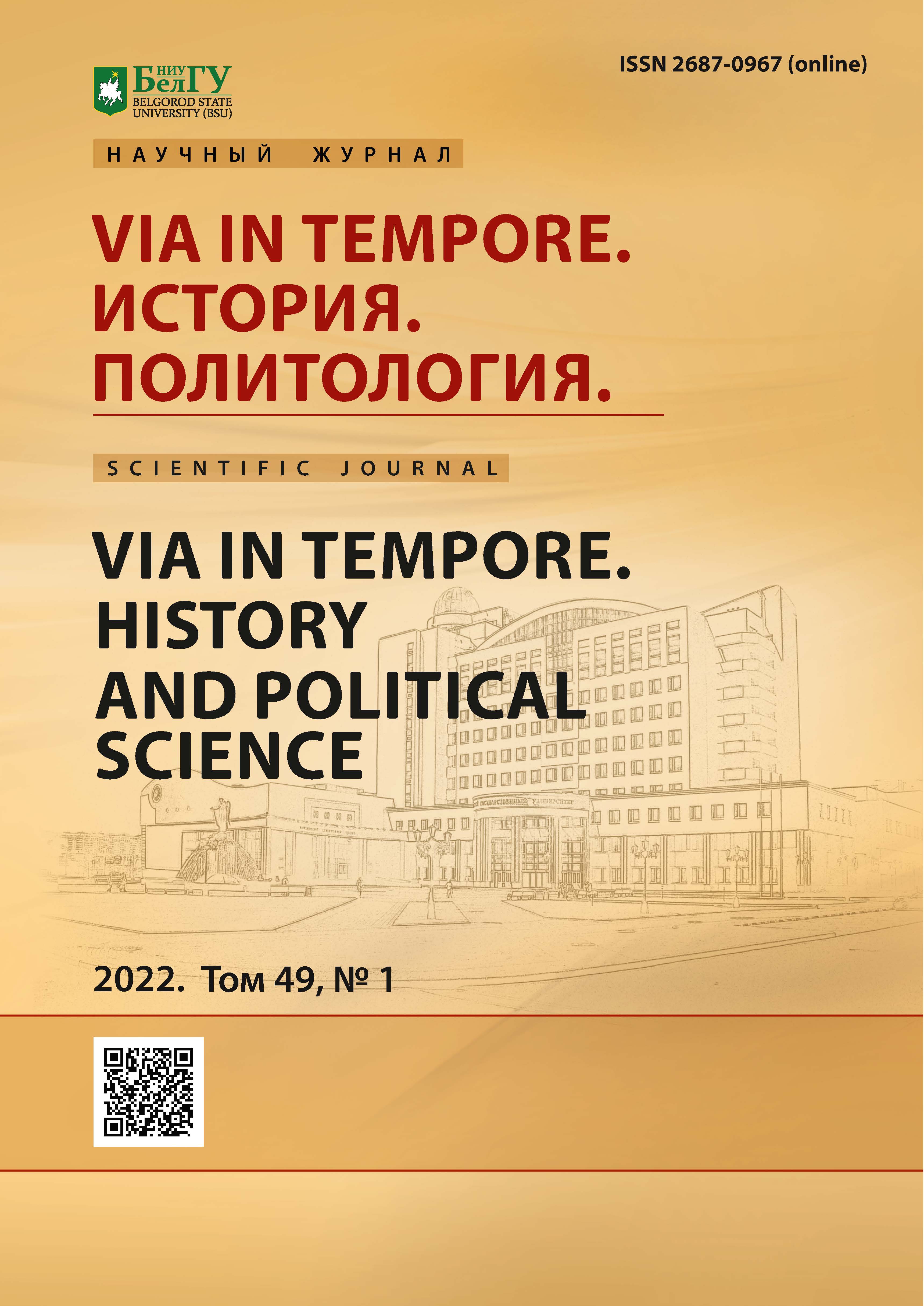Hannibal Barca is a military theorist
DOI:
https://doi.org/10.52575/2687-0967-2022-49-1-51-56Keywords:
ancient military theory, Hannibal, Nicephorus UranusAbstract
In the title «Tactics» by Nicephorus Uranus (ca. 950 to after 1007), a work of Hannibal is mentioned among the various sources of Uranus’ book. Probably, this Hannibal’s work could be the strategy of an experienced general or naumachia, or even poliorcetica according to the subjects. All these topics are «Tactics» by Nicephorus Uranus. Elderly Hannibal in his exile (186–183 B. C.) did not have enough time to compose an extensive work, it is probably was a short work, perhaps even in the form of a letter. Uranus may have become acquainted with this rare Hannibal’s essay when he was secretary to the Emperor Basil II Porphyrogenitus (976–1025) in Constantinople and could use the state archives (before 980 to 997). Along with Alexander the Great, Julius Caesar, Frederick the Great and Napoleon, Hannibal is considered as one of the best military leaders in European history. Since it is clear that the elderly Hannibal in exile did not have enough time to compose an extensive work, then most likely it was a rather short essay, maybe even in the form of a letter.
Downloads
References
Габелко О.А. 2005: История Вифинского царства. (Studia classica). СПб., Гуманитарная академия, 576.
Кораблев И.Ш. 1981: Ганнибал. 2-е изд. М., Наука, 359.
Лансель С. 2002: Ганнибал. Пер. Е.В. Головиной (Жизнь замечательных людей. Вып. 821). М., Молодая гвардия, 356.
Мохов А.С. 2011: «Хозяин Востока» магистр Никифор Уран. Уральский исторический вестник. № 3 (32), 41–49.
Нефёдкин А.К. 2010: Античные тактики и «Тактическое искусство» Флавия Арриана. Арриан. Тактическое искусство. Пер. А.К. Нефёдкин. (Fontes scripti antiqui). СПб., Факультет филологии и искусств СПбГУ; Нестор-История, 17–29.
Перевалов С.М. 2010: Тактические трактаты Флавия Арриана: Тактическое искусство; Диспозиция против аланов (Древнейшие источники по истории Восточной Европы). М., Памятники исторической мысли, 384.
Циркин Ю.Б. 1987: Карфаген и его культура (Культура народов Востока: Материалы и исследования). М., Наука, 285.
Brink K.O. 1941: Phormion. 8. Pauly’s Real-Encyclopädie der klassischen Altertumwissenschaft. Hbbd. 39, Sp. 540.
Dain A. 1937: La «Tactique» de Nicéphore Ouranos. Paris, Les Belles Lettres, 148.
Darrouzès J. 1960: Épistoliers byzantins du Xe siècle. Paris, Institut français d'études byzantines, 430.
Dennis G. (ed.). 2010: The Taktika of Leo VI. Text, Translation, and Commentary by G. Dennis. Washington: Dumbarton Oaks, 690.
Freckeisen A. 1893. Cornelii Nepotis vitae. Post C. Halmium recognovit A. Fleckeisen. Lipsiae, B.G. Teubnerus, 118.
Köchly H., Rüstow W. 1855. Griechische Kriegsschriftsteller. Tl. II. Abt. 1–2. Leipzig, W. Engelmann, 554.
Lang C. 1885. Flavii Vegeti Renati epitoma rei militaris. Lipsiae, B.G. Teubnerus, 256.
Macleod V.D. 1925. Lucian. Dialogi mortuorum. In: Lucian. Vol. VII. Cambridge (Mass.), Cambridge University Press, 2–174.
McGeer E. 1991: Tradition and Reality in the «Taktika» of Nikephoros Ouranos. Dumbarton Oaks Papers. Vol. 45, 129–140.
McGeer E. 1995: Sowing the Dragon’s Teeth: Byzantine Warfare in the Tenth Century. (Dumbarton Oaks Studies. 33). Washington, Dumbarton Oaks Research Library and Collection, 405.
Melber I. 1887. Excerpta Polyaeni. In: Woelfflin (ed). Polyaeni strategematon libri octo. Lipsiae, B.G. Teubnerus, 427–504.
Mendelssohn L. 1912. Hannibalic War. In: Appian’s Roman History. Vol. I. London, W. Heinemann; Cambridge, Harvard University Press, 303–400.
Trombley F. 1997: The Taktika of Nikephoros Ouranos and Military Encyclopaedism. In: P. Binkley (ed.). Pre-Modern Encyclopaedic Texts: Proceedings of the Second COMERS Congress, Groningen, 1–4 July 1996. Leiden, Brill, 261–274.
Viereck P., Roos A.G., Gabba E. 1962. Appiani Syriaca. In: Appiani historia Romana. Vol. I. Lipsiae, B.G. Teubnerus, 352–418.
Abstract views: 165
Share
Published
How to Cite
Issue
Section
Copyright (c) 2022 Via in tempore. History and political science

This work is licensed under a Creative Commons Attribution 4.0 International License.


